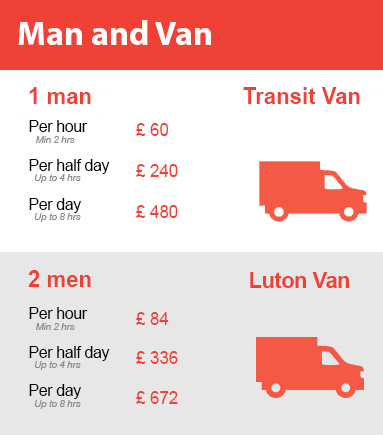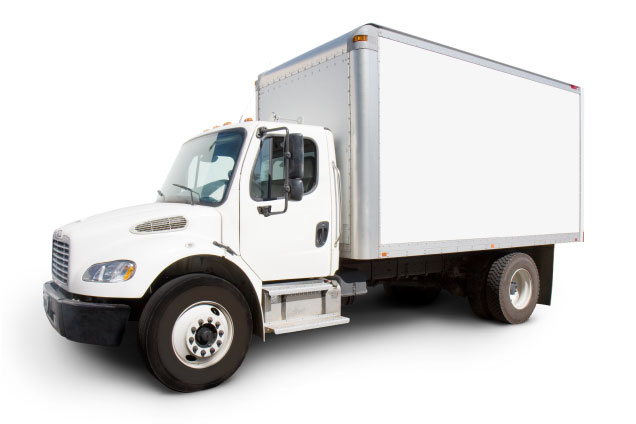Navigate Bed and Mattress Moving Like a Pro
Posted on 22/06/2025
Navigate Bed and Mattress Moving Like a Pro
Moving bed frames and mattresses can often seem like an overwhelming, cumbersome task. Whether you're relocating across town, upgrading to a bigger space, or simply rearranging your bedroom, having a solid plan can make all the difference. Navigate bed and mattress moving like a pro by following this comprehensive, actionable guide designed to minimize stress and maximize efficiency.
Why Professional Mattress and Bed Moving Matters
Beds and mattresses are among the bulkiest and heaviest pieces in any home. Improper handling can result in property damage, personal injury, or even a ruined night's sleep on a damaged mattress. Mastering bed and mattress transportation not only saves you time and money but also protects your investment in quality sleep. This guide is packed with expert-backed strategies to help you move beds and mattresses seamlessly.

Preparation: Set the Stage for a Smooth Mattress Move
Gather the Right Tools and Supplies
Before diving into the physical work, it's essential to assemble the right equipment. Being prepared ensures you can move a bed and mattress efficiently and safely.
- Mattress bags: Protects your mattress from dirt, moisture, and tearing.
- Furniture sliders: Makes moving heavy bed frames on floors much easier.
- Moving straps or ropes: Secure mattresses or bed parts during transit.
- Hand truck or dolly: Useful for transporting heavier bed components.
- Socket wrenches & screwdrivers: For dismantling and reassembling bed frames.
- Plastic bags & labels: Keep track of screws, bolts, and other hardware.
- Professional help: If the move is particularly challenging, consider hiring movers specializing in bed and mattress relocations.
Prepare Your Moving Space
Clear pathways both in your current and new location. Measure all doorways, staircases, and hallways to ensure your mattress and bed frame will fit--many a move has been thwarted by a narrow turn or doorway! Remove any obstacles that may be in the way, such as rugs or furniture, and prop open doors for easier navigation.
Disassemble Like a Pro
Take the time to carefully disassemble your bed frame. Remove all bedding, pillows, and any under-bed storage. If you have a slatted or platform bed, take note (or a photo) of how it's put together to make reassembly a breeze. Place all hardware in labeled plastic bags and tape it securely to the bed frame components.
Expert Packing Tips for Beds and Mattresses
Safe transportation is key to navigating mattress and bed moving expertly. Protect your items from dust, scratches, and shifting with these proven packing methods.
Wrapping the Mattress
- Use a mattress bag: Slide the mattress into a bag of the correct size to protect it from dust, dirt, and moisture. Double-bagging is recommended if it will be in storage or exposed to the elements.
- Tape and secure: Use packing tape to seal the bag fully, being careful not to tape directly onto the fabric itself.
- Keep the mattress upright: Always transport and store your mattress standing up on its side. This preserves its shape and prevents structural damage.
Packing Bed Frames and Components
- Wrap wooden parts: Use moving blankets or bubble wrap to cover large wood pieces or slats.
- Protect metal frames: Bundle and pad metal parts to avoid scratches or dents.
- Label everything: Place clear labels or masking tape on each piece if your bed frame has several similar-looking parts.
- Bag and attach hardware: Keep nuts, bolts, and screws in a sealed, labeled bag taped to the headboard, footboard, or main frame.
How to Move a Mattress and Bed Safely
Moving beds and mattresses safely isn't just about lifting with your knees (though that's important!). Use the following steps and strategies to move even the largest and heaviest items with ease:
Plan Your Route
Think through the route you'll take from the bedroom to the moving truck or new room. Are there tight corners? Obstacles? Low ceilings or stairwells? Lay down furniture sliders in hallways to help beds and mattresses glide, and assign someone to spot and guide you if possible.
Proper Lifting Techniques
- Lift with your legs, not your back: Keep a straight back, bend your knees, and lift evenly to avoid injury.
- Get assistance for big items: Always ask for help lifting and carrying large mattresses or heavy bed frames.
- Use moving straps: They help distribute the weight and make carrying mattresses and large bed pieces easier, especially up and down stairs.
- Take breaks: Don't rush the process or strain yourself. Take your time for safe navigation.
Loading into a Moving Truck
- Load mattresses upright: Position them along the wall of the vehicle, secured with straps to prevent shifting.
- Lay frames flat or stand up: For larger or heavier frames, lay flat on the floor. Lighter metal frames can be stood upright.
- Avoid stacking weight on mattresses: Never pile heavy objects on top of your mattress or headboard during transit.
Special Considerations for Different Mattress Types
Not all mattresses are built the same. From pillow tops to memory foam, each require slightly different handling techniques for optimal care.
Moving Memory Foam Mattresses
- Never bend or fold: Memory foam can become damaged if bent. Keep it upright and flat as much as possible.
- Bag tightly: Use a thick-moving bag, as memory foam can absorb moisture easily.
Moving Innerspring Mattresses
- Can handle some bending: In small spaces, you can flex an innerspring mattress slightly, but avoid folding sharply.
- Inspect for broken springs: After moving, inspect to ensure no damage occurred to internal springs.
Moving Hybrid or Adjustable Beds
- Follow manufacturer instructions: Hybrid and adjustable beds may have unique moving requirements. Reference your manual.
- Disassemble electronics: Remove or unplug any electrical components or motors before moving.
Common Mistakes When Moving Beds and Mattresses
Even the most diligent movers can fall into common traps. Avoid these pitfalls for a truly pro-level bed and mattress moving experience:
- Underestimating size and weight: Mattresses always seem lighter until you lift them! Always err on the side of caution and get help.
- Skipping the mattress bag: A moment of effort wrapping can save you from costly stains or damage.
- Forgetting hardware: Nothing stalls a move like hunting for missing bolts at your new place. Always bag and label.
- Lack of route planning: Check your measurements, angles, and clearances ahead of time.
- Ignoring reassembly instructions: If you're stumped, consult the manufacturer's guide or online videos for your specific bed model.
When to Call Professionals
While most homeowners can navigate mattress and bed moving with careful planning, certain scenarios demand professional help:
- Moving up or down multiple flights of stairs
- Very large, heavy, or valuable beds or mattresses
- Tight spaces that require creative maneuvering
- Time restrictions and need for speed
Many moving companies offer specialized bed and mattress moving services. Some even provide white glove, full-service moves for luxury or oversized items.
Post-Move Tips: Setting Up Your Bed Like a Pro
Quick Mattress Freshening
Once you've arrived and Unpacked your mattress, give it some fresh air. Let it stand upright for 1-2 hours if possible to release any trapped odors or dust from the move.
- Vacuum the mattress surface and frame before putting on clean bedding.
- Inspect for any rips, stains, or damage incurred during transport.
- Re-tighten all bolts and hardware on the bed frame for a secure, squeak-free sleep.
Don't forget to treat yourself to freshly laundered sheets and bedding for the perfect finishing touch!
Reassembling Your Bed
Reference your labels and any assembly notes or images you took beforehand. If you lost the instructions, many manufacturers offer PDF guides online. Take your time, and ensure everything is securely in place before you rest.
Eco-Friendly Mattress and Bed Moving
If you're disposing of an old mattress or bed frame during your move, consider sustainable options:
- Donation: Many charities accept gently used bed frames and mattresses.
- Recycling: Search for local mattress recyclers--many components can be repurposed.
- Sell or gift: A neighborhood network or online platform can connect you with someone in need.
Reducing landfill waste is a smart, environmentally friendly move.

Frequently Asked Questions on Bed and Mattress Moving
Can I move a mattress by myself?
It's possible with a light mattress and proper tools, but generally, two people make the process much safer and faster, reducing the risk of damage or injury. Always use moving straps or a hand truck if working solo.
How do I keep my mattress clean during a move?
Always use a mattress bag or heavy-duty plastic wrap, and ensure it's sealed. Avoid dragging your mattress on dirty surfaces.
Is it okay to fold a mattress for transport?
Foam mattresses can often be bent slightly, but never fold them sharply. Innerspring and hybrid mattresses should be kept flat or upright to avoid structural damage. Always check your manufacturer's guidelines.
How can I make reassembly faster?
Photograph each step of the disassembly, label hardware and frame parts, and keep all small accessories together.
Should I hire movers for large beds?
If your bed is exceptionally heavy, valuable, or situated in a location with tight quarters or lots of stairs, hiring professional movers can save significant time, hassle, and potential damage.
Conclusion: Move Beds and Mattresses without the Stress
Mastering bed and mattress moving truly is about more than just muscle--it's about preparation, the right tools, and smart strategies. Whether you're moving a compact single or a sprawling king-size bed, this guide empowers you to tackle the task confidently. Remember, if you need backup, never hesitate to call in the professionals. Happy moving, and here's to restful sleep in your new space!





